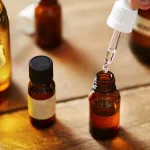Hey there, friend. If you’ve just been handed a prescription for hydrocodone and your mind is buzzing with questions like “What will this do to me?” or “Should I be worried about anything?” – you’re in the right place. In the next few minutes we’ll break down the most common and the most serious side effects, share practical ways to keep yourself comfortable, and point out the red‑flags that call for a doctor’s attention. Think of this as a quick coffee chat with someone who’s been through it and wants you to feel safe and informed.
Quick Answer Summary
What are the most common side effects?
Most people on hydrocodone notice a handful of mild reactions that usually ease up after a few days. The usual suspects are constipation, nausea, light‑headed dizziness, dry mouth and a touch of drowsiness. They’re annoying, but manageable.
What side effects are truly serious?
When the drug starts to interfere with breathing or your heart, that’s serious business. Look out for respiratory depression (slow, shallow breaths), severe allergic reactions such as swelling or hives, a rapid or irregular heartbeat (QT prolongation), adrenal‑gland problems, and any signs of overdose. These demand immediate medical care.
When should you call a doctor or go to the ER?
Any of the following should prompt a call to your provider right away, and you should head to the emergency department if they’re accompanied by trouble breathing or loss of consciousness:
- Blue or purple lips, gums or fingertips
- Severe, persistent vomiting or diarrhea
- Chest pain, rapid or irregular heartbeat
- Swelling of the face, tongue or throat, or a rash that spreads quickly
- Extreme drowsiness you can’t shake off
According to Drugs.com, recognizing these warning signs early can be life‑saving.
Mild Common Effects
Constipation – Why It Happens & Quick Fixes
Why it occurs
Hydrocodone binds to opioid receptors in your gut, slowing muscle contractions. That’s why the bathroom schedule can become a waiting game.
Easy ways to stay regular
- Drink at least eight glasses of water a day – think of it as giving your intestines a gentle splash.
- Load up on fiber: whole grains, fruits, and veggies. A bowl of oatmeal with berries can work wonders.
- Consider a stool softener like docusate sodium or an OTC fiber supplement. If constipation persists, talk to your doctor about prescription options such as lubiprostone.
Nausea & Vomiting
Triggers you might not expect
Taking the pill on an empty stomach or bumping your dose up too quickly can set off nausea. Even strong smells can be enough to make the stomach churn.
What helps
- Take hydrocodone with food – even a small snack can calm the queasy feeling.
- Ginger tea or ginger candies are natural anti‑nausea allies.
- If it’s really stubborn, a doctor may prescribe an anti‑emetic such as ondansetron.
Dizziness, Light‑Headedness & “Brain Fog”
When does it peak?
Most people feel the wobbliness within the first 24‑72 hours. Your body is still figuring out how to balance chemistry with the drug.
Safety tip
Don’t drive, operate heavy machinery, or climb ladders until you know how you react. A quick test: stand up slowly and see if you feel a spin. If you do, keep the seat belt on and the coffee mug far away.
Dry Mouth & Itchy Skin
Simple home remedies
Sugar‑free gum, hard candy, or a splash of water every hour can keep the desert feeling at bay. For itchy skin, a gentle moisturizer or an over‑the‑counter antihistamine (if approved by your doctor) can soothe the irritation.
Serious Long‑Term Risks
Respiratory Depression
What it looks like
Your breathing may become shallow or irregular, and you might notice a bluish tinge around your lips. This is the most feared side effect because it can become life‑threatening within minutes.
Emergency steps
If you suspect respiratory depression, call 911 immediately. If a naloxone kit (Narcan) is available, administer it as instructed while waiting for help. Naloxone can reverse opioid breathing problems quickly, buying you precious time.
Allergic Reactions & Anaphylaxis
Red‑flag symptoms
Sudden rash, hives, swelling of the face or throat, and trouble breathing are classic signs. These symptoms can progress fast, so treat them as an emergency.
What to do
Stop the medication, call emergency services, and if you have an epinephrine auto‑injector (EpiPen), use it right away.
Cardiac Effects – QT Prolongation
Who’s at risk?
Patients with existing heart rhythm problems or those taking other QT‑prolonging drugs (like certain antibiotics or antipsychotics) need extra monitoring.
What to watch for
Palpitations, dizziness, or fainting spells could point to an irregular heartbeat. A simple ECG at your doctor’s office can catch the issue early.
Adrenal‑Gland Problems
Why it matters
Long‑term opioid use can blunt adrenal hormone production, leading to chronic fatigue, low blood pressure, and a general “flat” feeling.
When to seek help
If you feel unusually exhausted, light‑headed upon standing, or notice a steady drop in energy, ask your clinician about adrenal function tests.
Dependence, Addiction & Withdrawal
Dependence vs. addiction
Dependence means your body has adapted to the drug and will show withdrawal symptoms if you stop abruptly. Addiction adds a compulsive craving and continued use despite harm.
Warning signs of withdrawal
- Muscle or bone pain
- Diarrhea, nausea, or vomiting
- Anxiety, hot‑or‑cold flashes, fever
- Insomnia and restless legs
If you notice any of these after a dose reduction, reach out for medical detox. A professional can guide you through a taper that minimizes discomfort. DrugAbuse.com provides a solid overview of the withdrawal timeline.
Managing & Reducing Side Effects
Medication Timing & Dose‑Adjustment
Typical hydrocodone dosage
Most prescriptions start at 5 mg every 4–6 hours with a maximum of 40 mg per day. Your doctor may adjust based on pain severity and your response.
When to discuss tapering
If side effects linger beyond a week, or if you notice any of the serious red‑flags, it’s time to have a conversation. “Start low, go slow” isn’t just a catchy phrase – it’s a safety principle.
Lifestyle Tweaks That Help
Hydration + fiber diet
Think of water as the oil that keeps your internal engine running smoothly. Pair it with a fiber‑rich diet and you’ll keep constipation at bay.
Avoiding CNS depressants
Alcohol, benzos, antihistamines, and even some sleep aids amplify drowsiness and breathing suppression. It’s safest to keep them out of the picture while you’re on hydrocodone.
OTC & Prescription Aids
What you can pick up today
- Stool softeners (docusate) for constipation
- Anti‑emetics like meclizine for nausea
- Low‑dose melatonin for insomnia if needed (after checking with your doctor)
- Naloxone rescue kit for emergency overdose reversal – ask your pharmacist how to obtain one.
Monitoring Tools at Home
Simple devices that give peace of mind
- Peak‑flow meter: Tracks breathing strength; a drop may signal respiratory depression.
- Blood‑pressure cuff: Watch for sudden lows or highs that could hint at cardiac issues.
- Symptom diary: Jot down when side effects appear, their severity, and any triggers. This record is gold for your next doctor visit.
Drug Interactions & the “Opioid‑Plus” Effect
Alcohol & Other Depressants
Mixing hydrocodone with alcohol is a recipe for dangerous sedation and respiratory slowdown. Even a single glass can tip the balance.
Benzodiazepines, Muscle Relaxants, Antihistamines
These meds share the same “slow‑down” pathway in the brain. Combining them can magnify drowsiness, dizziness, and the risk of overdose.
CYP3A4 Inhibitors & Inducers
Drugs like certain antifungals (ketoconazole) or antibiotics (erythromycin) can raise hydrocodone levels, while others like rifampin lower them. Always hand your full medication list to your prescriber.
Acetaminophen Load – Liver Safety
Many hydrocodone tablets include acetaminophen. The safe upper limit is 4 g per day. Exceeding that, especially with other acetaminophen‑containing products, can cause acute liver failure. Drugs.com warns that the combination should be monitored closely.
Bottom Line & Next Steps
Hydrocodone can be a powerful ally for managing severe pain, but it carries a predictable set of mild side effects and a small but real set of serious risks. Knowing the difference, staying alert to warning signs, and keeping the conversation open with your healthcare team are the best ways to protect yourself.
If any of the side effects we discussed feel overwhelming, or if you simply want a clearer plan for tapering off, reach out to your doctor. You deserve a pain‑relief strategy that works for you without compromising safety.
Got a story about how you’ve handled hydrocodone side effects? Share it in the comments – your experience could help someone else feel less alone. And if you have questions, don’t hesitate to ask. We’re all in this together.


















Leave a Reply
You must be logged in to post a comment.